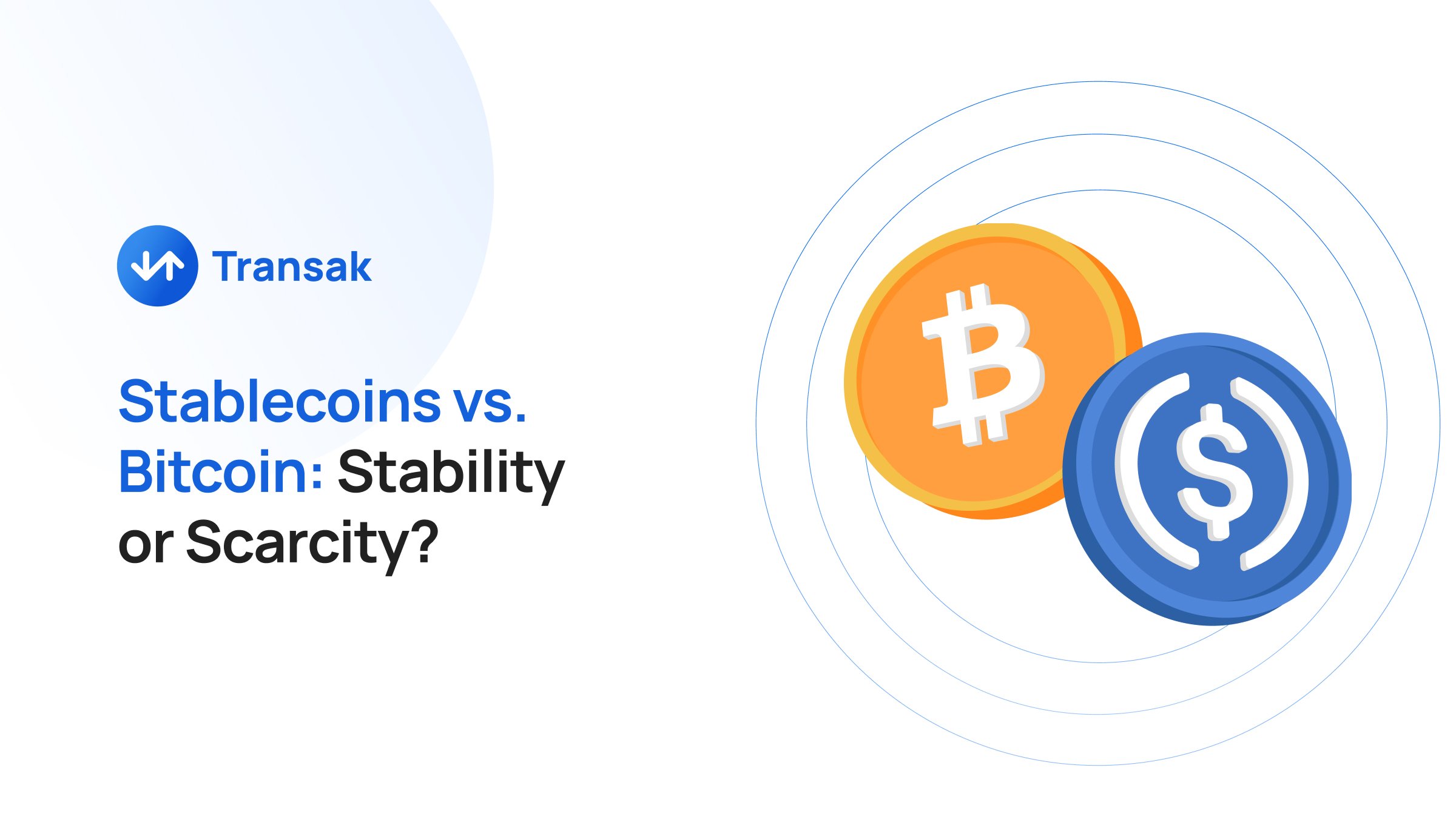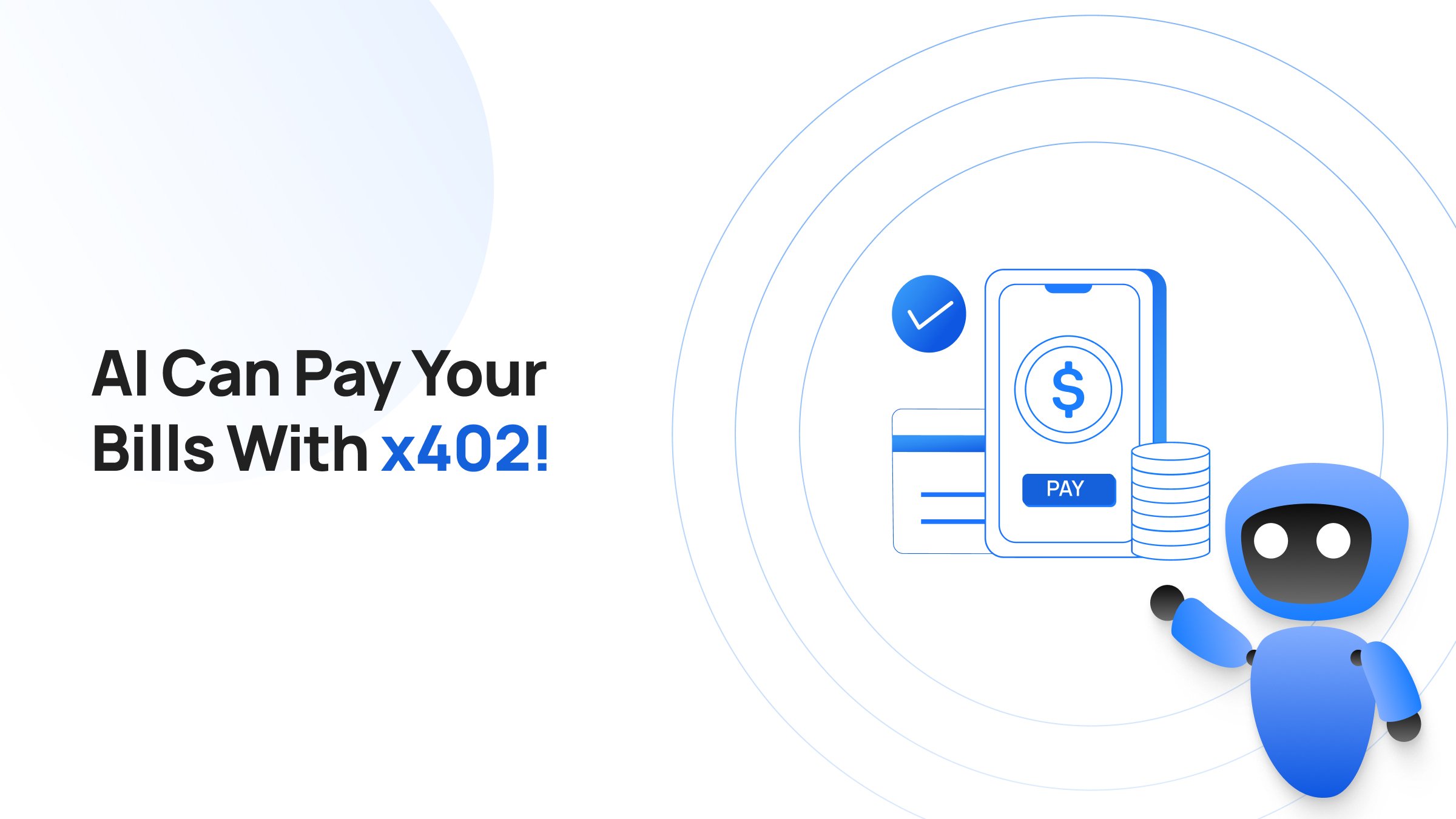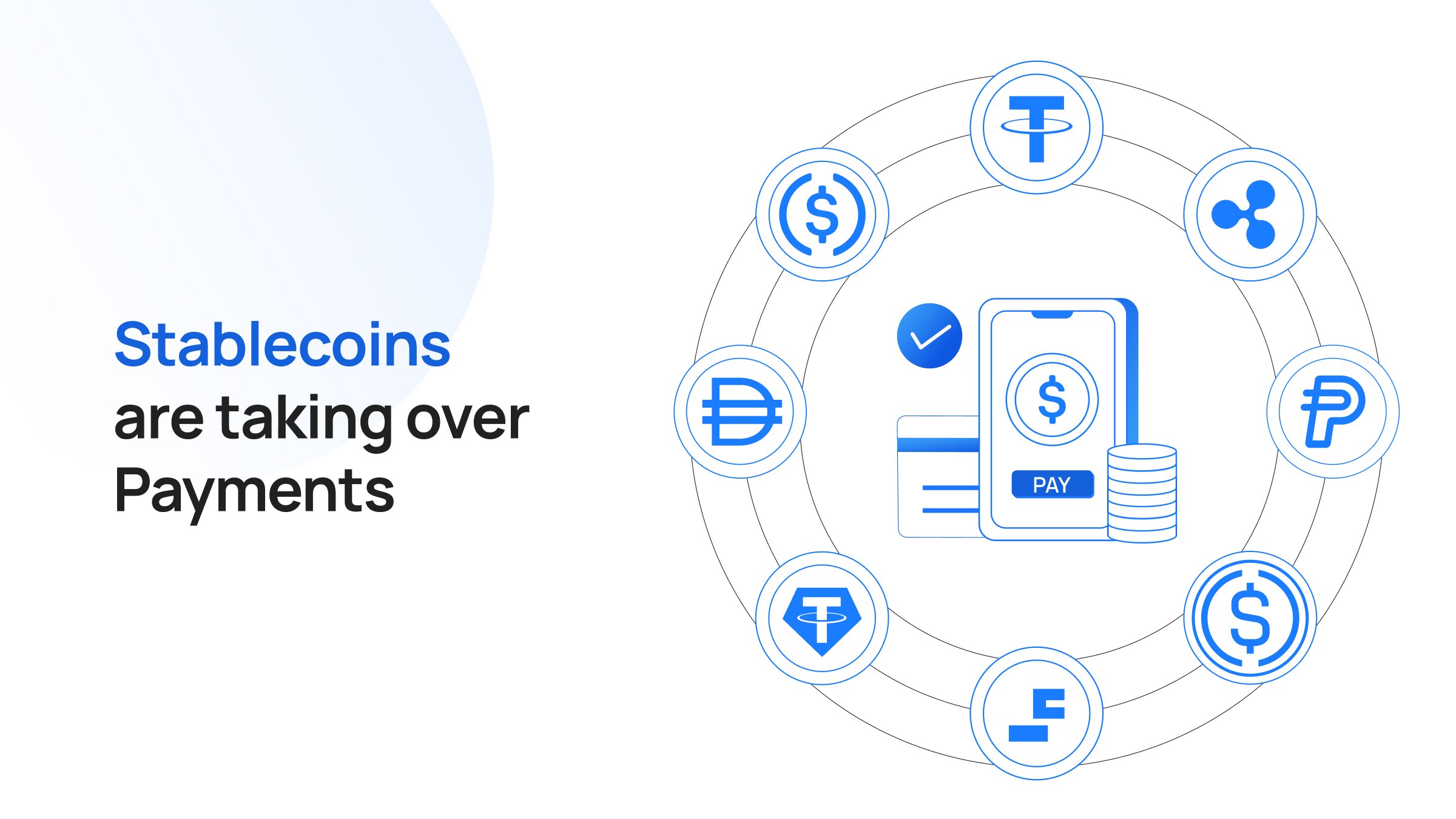Takeaways
Satoshi Nakamoto invented Bitcoin as an alternative to government-issued money. It is decentralized, borderless, trustless, digitally native, deflationary, and tamper-resistant – everything fiat money is not.
Despite the radical approach, limitations in blockchain tech at the time kept Bitcoin from achieving its goal, i.e., to put money outside the control of centralized authorities and into the hands of the people through a trustless, peer-to-peer system.
Bitcoin proved that decentralized money could exist, but not yet at the scale or speed needed for everyday payments. Volatility, transaction throughput, and energy-intensive mining made it more of a store of value (like gold) than a medium of exchange.
Enter stablecoins. Built on the same blockchain foundations but designed for price stability like the dollar and programmability of cryptocurrencies.
This article explores the differences between “digital gold” and “digital cash,” i.e., Bitcoin and stablecoins.
Bitcoin Explained Brief
Bitcoin is the most well-known cryptocurrency, launched in 2009 by the pseudonymous creator Satoshi Nakamoto. It was designed to be a peer-to-peer form of digital money.
What makes Bitcoin unique is its fixed supply. Only 21 million BTC will ever exist, making it digitally scarce, like gold. This scarcity is enforced by code, not by central banks or monetary policy committees.
Rather than being backed by any physical asset or fiat currency, Bitcoin’s value comes from trust in the network, the security of its blockchain, and the belief in its long-term role as a store of value. It operates on a proof-of-work system, where miners compete to validate transactions and secure the network in exchange for new BTC.
While Bitcoin was initially conceived as a means of payment, it has largely evolved into “digital gold” due to its price volatility, slow transaction speeds, and high network fees. Today, Bitcoin is primarily used for:
- Long-term investment and wealth preservation
- Hedging against inflation or currency devaluation
- Cross-border transfers where traditional banking is limited or expensive
Its credibility has grown over the years, cemented by its decentralized structure, global recognition, and the increasing involvement of institutional investors and even governments. But despite its strengths, Bitcoin isn’t ideal for everyday transactions or stable pricing, and that’s where stablecoins enter the picture.
Stablecoins Explained Briefly
Stablecoins are a type of cryptocurrency designed to maintain a stable value (usually pegged 1:1 to a fiat currency like the US dollar).
At their core, stablecoins solve a crucial problem in the crypto ecosystem – volatility.
Imagine trying to pay your rent or receive your salary in an asset that could swing 10% in a day. If the asset could increase in value, you wouldn’t want to pay with it, and if it were to decrease, the landlord wouldn’t want to accept it.
Stablecoins offer price stability without sacrificing the benefits of blockchain-based transactions. That’s what makes them an excellent choice for modern peer-to-peer payments.
Unlike Bitcoin, stablecoins aren’t aiming to replace fiat currency. They’re more like digital wrappers for fiat, making Dollars or Euros more accessible, safer, and faster to move.
Also Read: What Is Embedded Finance?
7 Major Differences Between Stablecoins and Bitcoin
1. Price Volatility
Bitcoin is highly volatile. Its price fluctuates based on market demand, investor speculation, and macro events.
Stablecoins are normally pegged to fiat (usually USD) and are designed to maintain price stability.
2. Purpose and Primary Use Case
Bitcoin is a long-term store of value (“digital gold”), a hedge against inflation, and sovereign money.
Stablecoins are a medium of exchange, a settlement asset, and on/off-ramp tool.
3. Supply Mechanism
Bitcoin has a fixed supply of 21 million. New coins are mined with decreasing rewards every four years in a process called Bitcoin Halving.
Stablecoins’ supply is elastic. They are minted and burned to meet demand and maintain the peg.
4. Trust Model
Bitcoin is trustless and fully decentralized. It operates on proof-of-work consensus.
Most stablecoins are issued by centralized entities, like Tether, that require trust in custodians, audits, or smart contracts.
5. Interoperability
Bitcoin is native to its own chain and has a limited cross-chain functionality unless wrapped (e.g., wBTC).
Stablecoins, on the other hand, are designed to be highly interoperable. They are usually issued across multiple blockchains like Ethereum, Solana, Avalanche, Polygon, etc.
6. Composability in DeFi
Bitcoin’s DeFi composability is very limited due to limited smart contract functionality. However, it can be used in DeFi via wrapped tokens, like wBTC on Ethereum.
Stablecoins are one of the core building blocks in DeFi protocols. They are used for lending, borrowing, trading, liquidity, and staking.
7. Monetary Policy and Control
Monetary policy is hardcoded in Bitcoin and cannot be changed without overwhelming network consensus.
In case of stablecoins, issuers control minting, redemption, reserve management, and often have central levers to freeze assets or adjust parameters.
Stablecoins vs. Bitcoin At A Glance
To really understand how stablecoins and Bitcoin serve different roles, it's helpful to compare them side by side.
Bitcoin |
Stablecoins |
|
|
Volatility |
High |
Low |
|
Supply |
Fixed at ~21 million |
Can be minted or burned as needed |
|
Backing |
Not backed by any asset |
Usually backed by the same or greater amount of fiat, gold, treasury bonds, etc. |
|
Primary Use Case |
Store of value like digital gold |
Payments, remittances, settlements |
|
Speed & Cost |
Slower, higher fees |
Generally faster and cheaper (also dependent on blockchain) |
|
Philosophy |
Max decentralization and scarcity |
Price stability and usability |
Stability vs. Scarcity: What Drives Their Value?
Bitcoin and stablecoins have fundamentally different value models.
Stablecoins: Value Through Pegged Stability
Stablecoins, in contrast, derive their value by maintaining a 1:1 peg to a reference asset, usually a fiat currency like the U.S. Dollar. Their primary goal is not appreciation, but stability.
The mechanics behind the peg vary depending on the type:
- Fiat-backed stablecoins like USDC hold real dollars or equivalents in reserve.
- Crypto-backed stablecoins like DAI overcollateralize with volatile assets to ensure price stability.
- Hybrid stablecoins like FRAX use a mix of TradFi and DeFi primitives to ensure price stability.
There is also another class of stablecoins, called ‘algorithmic stablecoins’, that maintain stability by creating arbitrage opportunities or other uncollateralized methods. These, however, have a historical track record of 100% failure rate so far.
The promise of stability makes stablecoins incredibly useful for everyday transactions, DeFi protocols, and bridging web3 with traditional finance. But unlike Bitcoin, users of stablecoins trade the idea of decentralization and scarcity for predictability and trust in the issuer or system.
Interesting Read: Top Stablecoin Cards Reviewed
Bitcoin: Value Through Scarcity
Bitcoin’s value is primarily driven by digital scarcity. With only 21 million coins ever to be mined, it mirrors the economic principle that scarcity creates value.
Other factors that contribute to Bitcoin’s value:
- Decentralization: No central authority controls Bitcoin. It’s governed by a global network of participants.
- Security: The Bitcoin network is one of the most secure in the world, powered by proof-of-work.
- Trust: Over time, Bitcoin has developed a strong reputation as a reliable long-term asset, supported by the Lindy Effect (the idea that the longer something survives, the longer it’s likely to endure).
Bitcoin’s price is determined purely by supply and demand on the open market. This makes it a speculative asset with high upside potential.
How Do Stablecoins Make Money?
If stablecoins are engineered to stay at $1, where’s the profit in issuing them? Why would companies like Tether, Circle, or even PayPal invest so heavily in a product that, by design, doesn’t appreciate in value?
When a company issues a stablecoin, say $1 billion worth of USDC or USDT, it receives $1 billion in cash or equivalent from users. These funds don’t just sit idly but are parked in interest-generating assets like U.S. Treasury bills, reverse repos, or institutional-grade money market funds.
For example, Tether (the issuer of USDT) made over $13 billion in profits in 2024 through interest. That’s in the same league as Goldman Sachs!
Source: Tether
Some stablecoin issuers (especially newer players) also charge small transaction fees. This is especially relevant for enterprise-facing issuers like PayPal USD (PYUSD), which is integrated into PayPal’s own payment rails. PYUSD helps PayPal reduce costs on international settlements while also offering businesses programmable, real-time dollar transfers.
And with stablecoin supply projected to exceed $3.7 trillion by 2030, we’re looking at one of the most underrated revenue models in digital finance.
Conclusion
Bitcoin is a belief system in digital scarcity and monetary independence.
Stablecoins are a tool for seamless digital transactions and financial infrastructure.
Both are crucial to the crypto ecosystem, but they solve different problems, and understanding that difference is key to using them wisely.
Also Read: How Transak Abstracts the Messy Middle of Stablecoin Payments
Buy Stablecoins on Transak
Transak is a leading stablecoin payments infrastructure provider with licenses globally.
Users can purchase popular stablecoins like USDT, USDC, and USDe using familiar payment methods like Apple Pay, Google Pay, Credit Cards, Debit Cards, and Bank Transfers on Transak.
Buy stablecoins on Transak now.
FAQs
Are stablecoins considered crypto?
Yes. Stablecoins are a type of cryptocurrency designed to maintain a stable value, usually pegged to a fiat currency like the US dollar.
How do stablecoins make money?
Major stablecoin issuers earn revenue by investing the fiat reserves backing the stablecoins in low-risk assets like government bonds, generating interest income.
What are the top 3 stablecoins?
As of 2025, the top 3 stablecoins by market cap are:
- USDT (Tether)
- USDC (USD Coin)
- USDe (Ethena USD)
All three top stablecoins are available to purchase on Transak.
Is it safe to keep money in stablecoins?
Generally, yes, it's safe to keep money in stablecoins (especially with reputable issuers). As a golden rule, look for stablecoins that are fully backed by assets like real dollars, bonds, or gold.
Is stablecoin better than Bitcoin?
Stablecoins are better than Bitcoin in certain use cases. For example, they are a better mode of payment, particularly in microtransactions, compared to BTC.
Are stablecoins a good investment?
Stablecoins are not designed to grow in value. They're more useful for parking funds, avoiding volatility, or moving money quickly. They don’t generate profits like traditional investments unless used in yield-bearing platforms. If you’d like to earn income from stablecoins, you can explore yield-bearing stablecoins.
Is it better to invest in BTC or USDT?
Buying USDT is not an investment, per se, as it is designed to maintain a constant value. If you invest $1000 in USDT today, it’d remain the same even after months, whereas the amount may increase (or decrease) if put in BTC.
How do stablecoins stay at $1?
Different stablecoins use different mechanisms to stay at $1. Fiat-backed stablecoins (like USDC) are redeemable 1:1 for USD, while algorithmic or crypto-collateralized stablecoins use smart contracts and market incentives to maintain the peg.
Why would someone buy a stablecoin?
People buy stablecoins to:
- Avoid crypto volatility
- Make cross-border payments
- Access DeFi protocols
- Hold digital dollars in regions with unstable local currencies
Is Bitcoin a stablecoin?
No. Bitcoin is a volatile cryptocurrency. In contrast, stablecoins are designed to maintain a stable value (usually pegged to a fiat currency like the US dollar).






